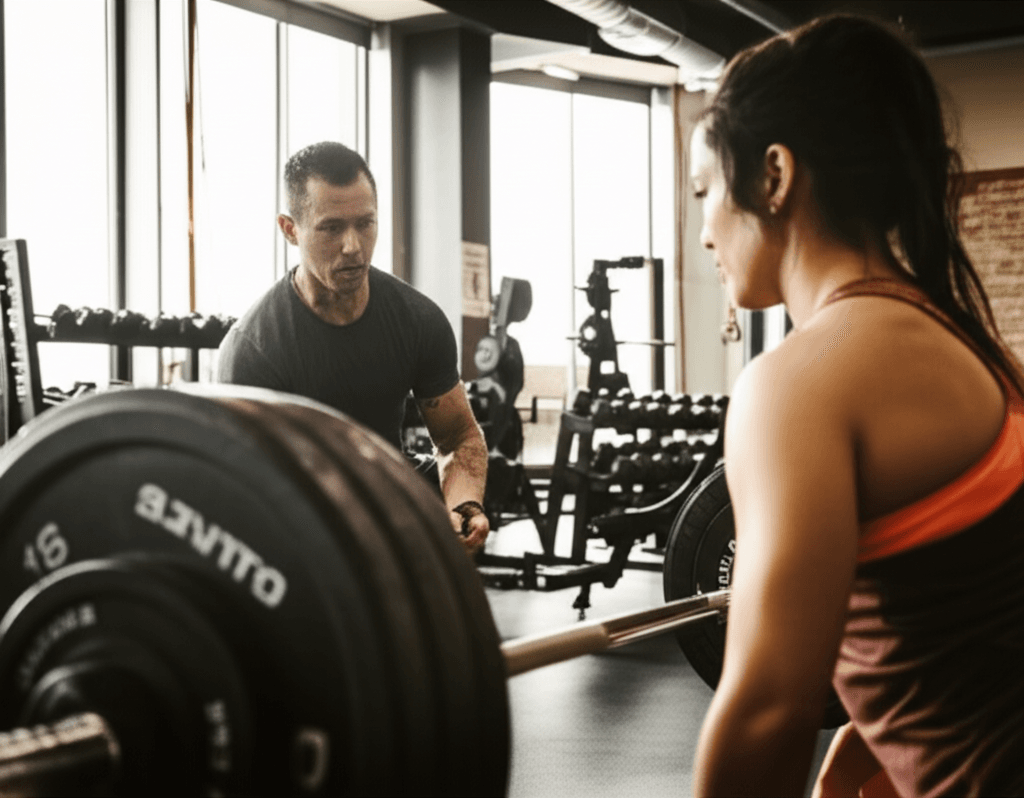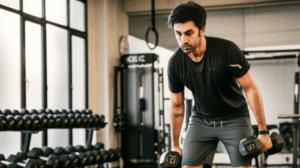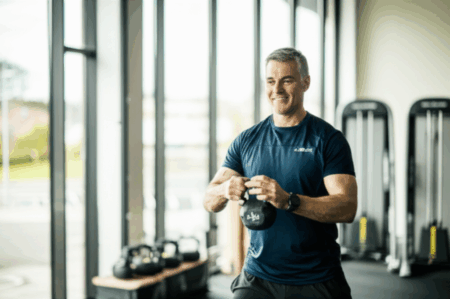For many, the desire to exercise regularly is strong, but the path to making it a consistent, enjoyable habit is often paved with good intentions and frequent setbacks. What if the secret lay not in heroic efforts, but in a smart, balanced approach to your weekly routine and a few powerful shifts in mindset? An expert trainer reveals her precise weekly workout schedule and the five foundational strategies she champions to transform exercise from a chore into an ingrained, indispensable part of life.

The Expert Trainer’s Weekly Workout Routine
A well-rounded fitness program balances various elements, including aerobic fitness, strength training, core exercises, balance training, and flexibility. This expert-designed weekly routine focuses on hitting all major muscle groups twice a week, incorporating both strength and cardiovascular training, and prioritizing adequate recovery to optimize results and prevent burnout. According to health guidelines, adults should aim for at least 150 minutes of moderate aerobic activity or 75 minutes of vigorous activity per week, alongside strengthening activities for all major muscle groups at least twice a week.
Key Principles of the Routine
- Progressive Overload: Consistently challenging the body by increasing weight, reps, sets, or decreasing rest times is crucial for continued adaptation and growth.
- Balanced Split: Utilizing a Push/Pull/Legs (PPL) split allows for high training frequency for each muscle group, which is optimal for muscle building and strength.
- Compound Movements: Exercises like squats, deadlifts, and bench presses form the foundation, working multiple muscle groups simultaneously for efficiency and overall strength.
- Active Recovery: Incorporating lighter activities on rest days aids in recovery and mobility without overtaxing the body.
Monday: Push (Chest, Shoulders, Triceps)
This session focuses on pushing movements for the upper body.
- Warm-up: 5-10 minutes of light cardio and dynamic stretches.
- Workout:
- Barbell Bench Press: 3-4 sets of 8-12 reps.
- Overhead Dumbbell Press: 3-4 sets of 8-12 reps.
- Incline Dumbbell Press: 3 sets of 10-15 reps.
- Lateral Raises: 3 sets of 12-15 reps.
- Triceps Pushdowns (cable): 3 sets of 10-15 reps.
- Overhead Triceps Extension: 3 sets of 10-15 reps.
- Cool-down: Static stretches for chest, shoulders, and triceps.
Tuesday: Pull (Back, Biceps)
Today targets the pulling muscles of the upper body.
- Warm-up: 5-10 minutes of light cardio and dynamic stretches.
- Workout:
- Barbell Deadlifts (or Rack Pulls): 3-4 sets of 6-8 reps (focus on form).
- Pull-ups or Lat Pulldowns: 3-4 sets of 8-12 reps.
- Bent-Over Dumbbell Rows: 3 sets of 10-15 reps.
- Seated Cable Rows: 3 sets of 10-15 reps.
- Bicep Curls (dumbbell or barbell): 3 sets of 10-15 reps.
- Hammer Curls: 3 sets of 10-15 reps.
- Cool-down: Static stretches for back and biceps.
Wednesday: Active Recovery / Mobility
This day is dedicated to aiding recovery and improving flexibility and range of motion.
- Activity: 30-45 minutes of low-intensity activity such as a brisk walk, gentle yoga, foam rolling, or stretching. Flexibility exercises should be done at least 2-3 days a week, holding stretches for 10-30 seconds.
Thursday: Legs & Core
A dedicated day for lower body strength and core stability.
- Warm-up: 5-10 minutes of light cardio and dynamic stretches (leg swings, bodyweight squats).
- Workout:
- Barbell Squats: 3-4 sets of 8-12 reps.
- Romanian Deadlifts (RDLs): 3-4 sets of 8-12 reps.
- Leg Press: 3 sets of 10-15 reps.
- Leg Extensions: 3 sets of 12-15 reps.
- Hamstring Curls: 3 sets of 12-15 reps.
- Plank variations: 3 sets, hold for 30-60 seconds.
- Russian Twists: 3 sets of 15-20 reps per side.
- Cool-down: Static stretches for quads, hamstrings, and glutes.
Friday: Full Body / HIIT Cardio
A dynamic session combining full-body strength or high-intensity interval training.
- Warm-up: 5-10 minutes of dynamic warm-up.
- Option 1 (HIIT): 20-30 minutes of High-Intensity Interval Training, alternating short bursts of intense activity with recovery periods (e.g., sprints, burpees, battle ropes).
- Option 2 (Full Body Strength): 3-4 sets of 10-15 reps of compound movements like Goblet Squats, Push-ups, Inverted Rows, and Walking Lunges.
- Cool-down: Light cardio and full-body stretching.
Saturday & Sunday: Active Recovery / Rest
These days are crucial for muscle repair, growth, and mental well-being.
- Saturday: Light activity like a long walk, hiking, cycling, or swimming, focusing on enjoyment and gentle movement.
- Sunday: Complete rest, allowing the body to fully recover.

Five Pillars of Consistent Exercise
Making exercise a consistent habit is often more about strategy and mindset than sheer willpower. Here are five things that experts recommend for building lasting exercise adherence:
1. Discover Your Movement Joy
If you dread your workouts, consistency will be an uphill battle. Experts emphasize finding activities you genuinely enjoy and that fit your personality and interests. If you’re social, group classes or team sports can provide motivation and connection. If you prefer solitude, swimming or jogging might be more appealing. The goal is to make physical activity a lifestyle choice rather than a burdensome task. “Choose an activity you like. If you know you do not like jogging, chances are you won’t stick with it.”
2. Schedule It Like a Non-Negotiable
Treat your workouts like any other important appointment—schedule them in your calendar and commit to them. Establishing a consistent context, such as exercising at the same time and in the same place each day, helps to create mental and physical associations, making the behavior more automatic. This routine reduces the mental effort needed to start, transforming exercise into a natural part of your day.
3. Start Small, Build Gradually
Trying to do too much too soon is a common pitfall that can lead to soreness, injury, and burnout. Instead, begin with small, achievable goals that are easy to incorporate into your routine. For example, start with a 20-minute walk daily and focus on sticking to it. Once that habit is solidified, you can gradually increase intensity, duration, or introduce new exercises. “Begin easy and slowly increase your effort.” This phased approach helps the body adapt and fosters a sense of accomplishment, reinforcing the habit.
4. Track Progress, Not Perfection
Monitoring your progress can be a powerful motivator. Set realistic, measurable goals—whether it’s lifting heavier weights, running a longer distance, or simply exercising more days a week. Keeping an exercise journal or using a fitness tracker allows you to visually see your improvements, which can encourage you to work towards new goals. Remember that consistency is more important than striving for perfection in every single workout. Don’t let a missed day derail your entire effort; simply get back on track the next day.
5. Embrace Accountability & Support
Exercising with others can significantly boost motivation and adherence. Working out with friends, joining a group class, or even sharing your goals with family members provides social support and encouragement. “Exercise with friends or family for social support.” A personal trainer or an accountability partner can also provide the external push and guidance needed to stay committed. This shared experience can make exercise more enjoyable and help you overcome periods of low motivation.







